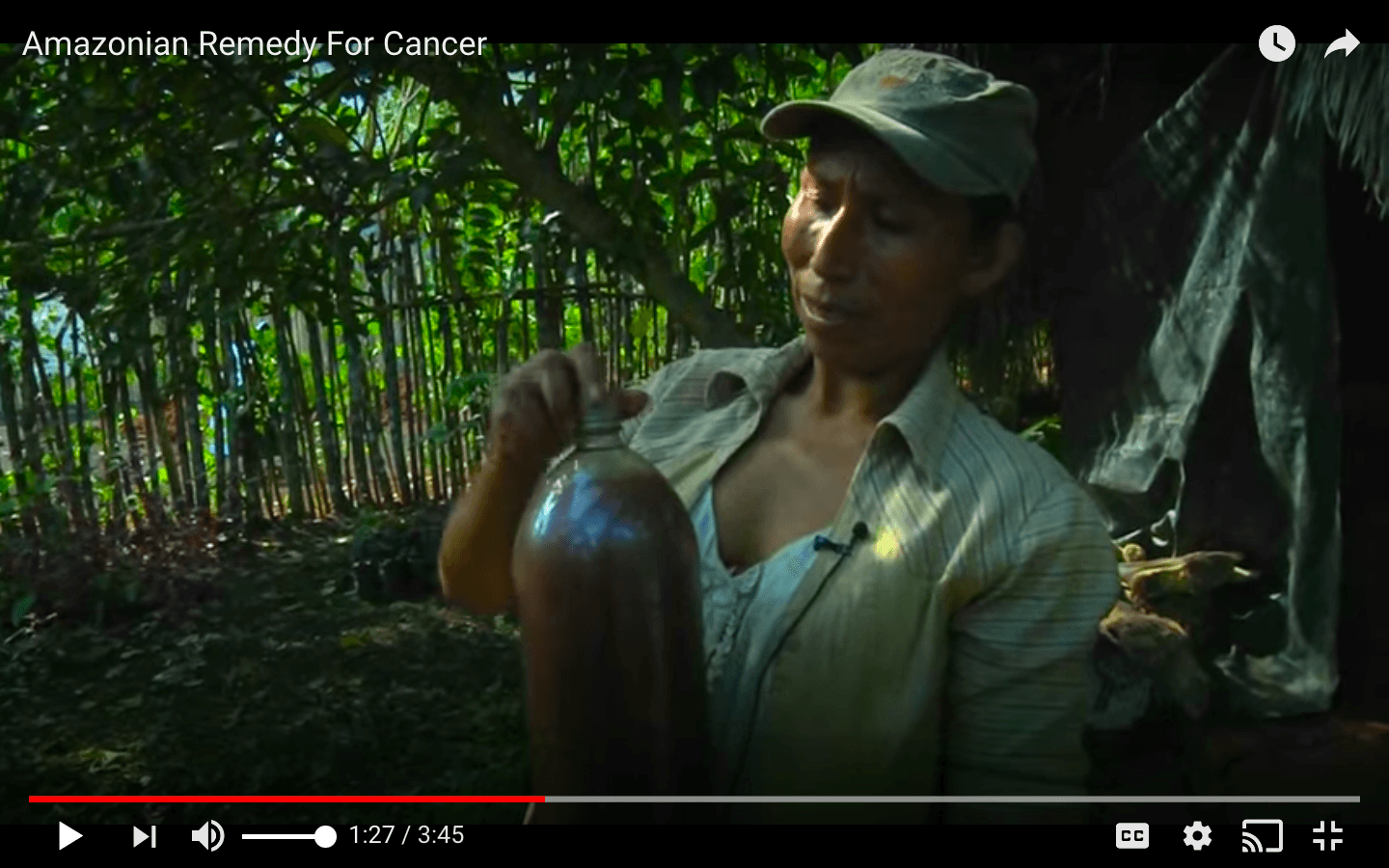The clip was shot in the remote village of Chazuta, about 4 hours east of the remote town of Tarapoto in the high jungle of Peru. We had heard that there was a powerful female shaman in this region but as is commonly the case, true shamans (or curanderos), don’t always want to be found. After spending hours speaking to the locals, we were finally pointed to a hut at the edge of town. Here we found Maribel, mother of three and the last of a long lineage of healers in this area. She took us on a “medicine walk” and showed us a number of healing plants that have been in her family for generations. This segment is just the first of a few teachings she gave us. Enjoy!

Here are three of the ingredients that were in the Amazonian Cancer Cure you just saw above. The herbs listed below can be acquired online with a little detective work!
Capirona: Calycophyllum spruceanum
Capirona is a high canopy tree commonly found near water that grows straight upward to a height of about 100 feet. Extremely resilient and flood resistant, the Capirona produces small, white flower and long seed pods with 3-5 seeds inside. The bark is commonly brewed into a salve which is rubbed on the skin, forming a thin coating that helps fight the effects of aging, parasites, and fungal infections. The bark is also effective in treating diabetes. Peruvian tribes commonly use Capirona decoctions to treat fungal infections of the skin as well as certain skin parasites that are commonly found in the Amazon Basin.
Matico: Piper Aduncum
The Matico is a tropical tree that resembles a shrub. The tree belongs to the pepper family and all preparations containing Matico bark tend to have an aromatic peppery taste and smell. The leaves of the Matico are commonly used as anti-septic. Certain tribes also rely on the herb to stop hemorrhages as well as stomach ulcers. The plant gets its name from a Spanish explorer who luckily stumbled upon the plant after being severely wounded and found that it stopped his bleeding immediately.

Guayaba: Psidium guajava
Known as the “apple guava”, the Guayaba is a deliciously sweet fruit that is a common food staple in the Amazon regions of Peru. The leaves and bark also possess many medicinal qualities and have been implemented by the shamans of Peru for thousands of years. The leaves are boiled into a tea to treat diarrhea and dysentery, menstrual pain, sore throats, and vertigo. The leaves can also be chewed to heal mouth sores, bleeding gums and get rid of bad breath. The bark is used topically to heal wounds, ulcers and skin sores.



One Response
im in peru searching for a woman healer… a real one and I would like to know how to find this woman…could you possibly tell me where she is?